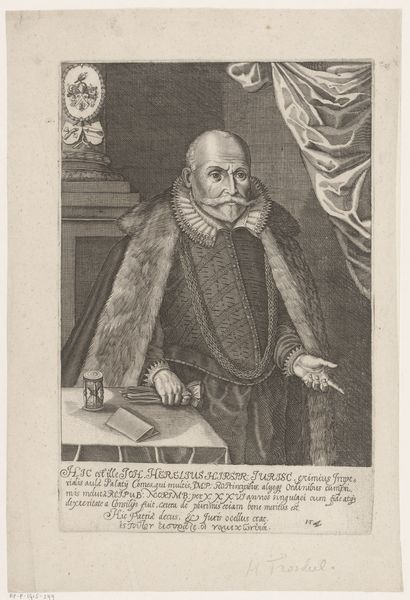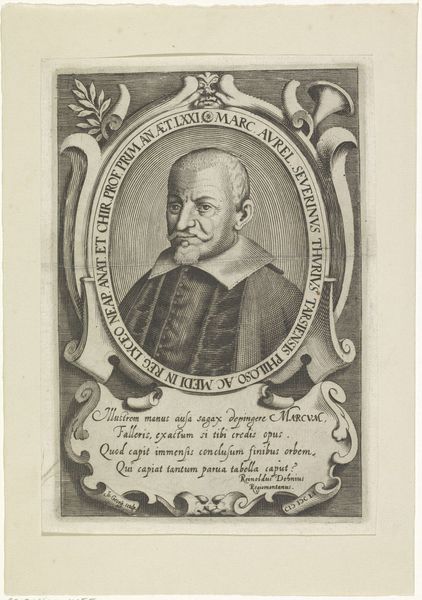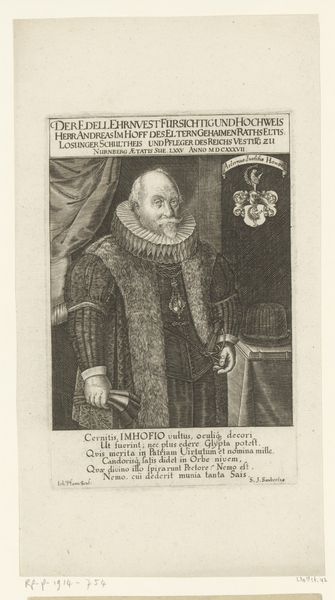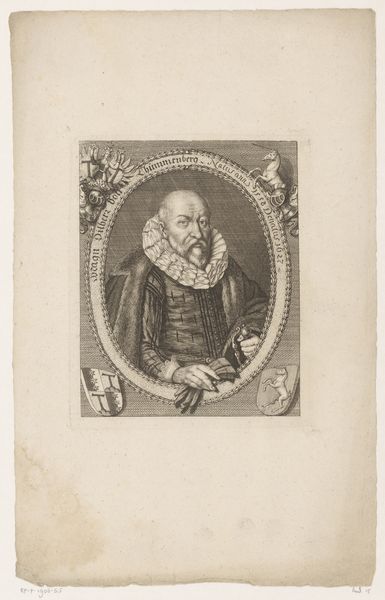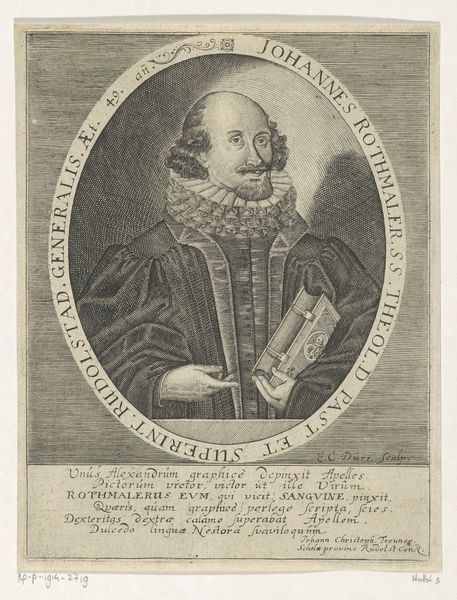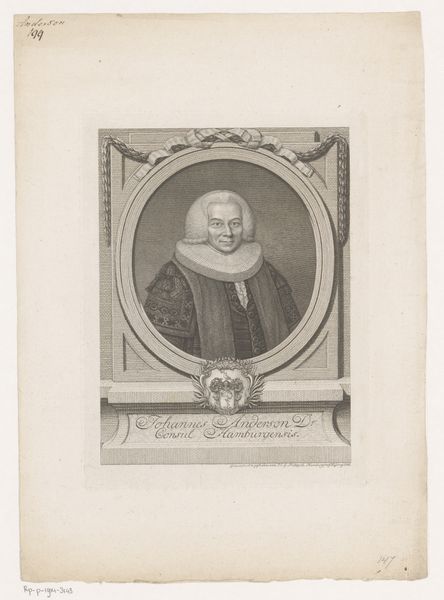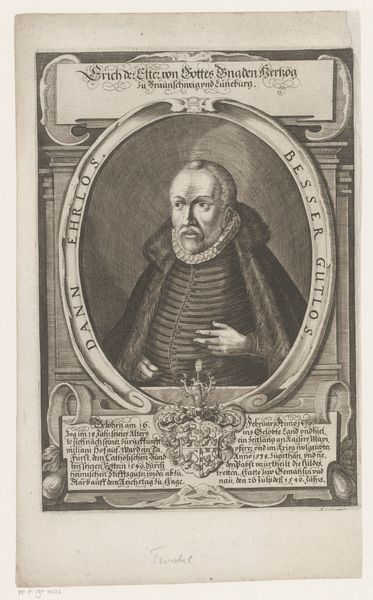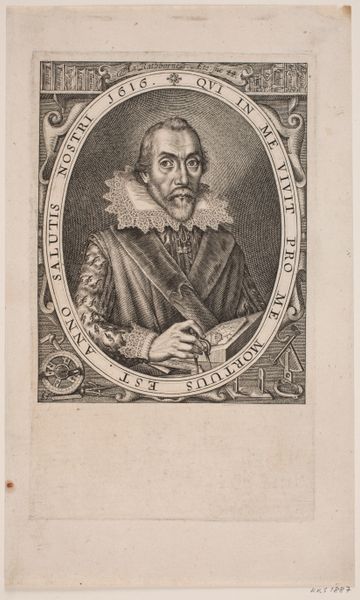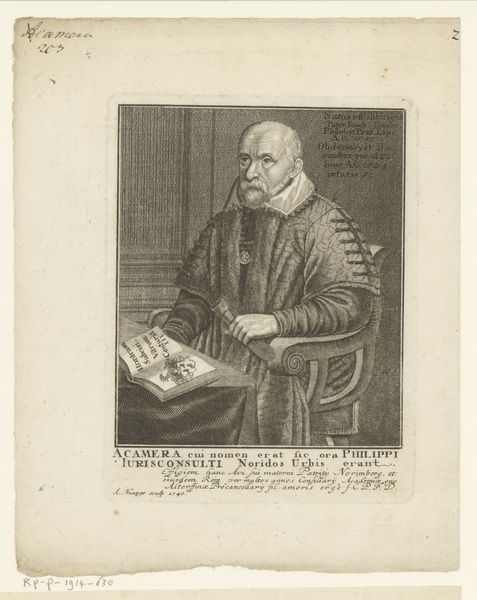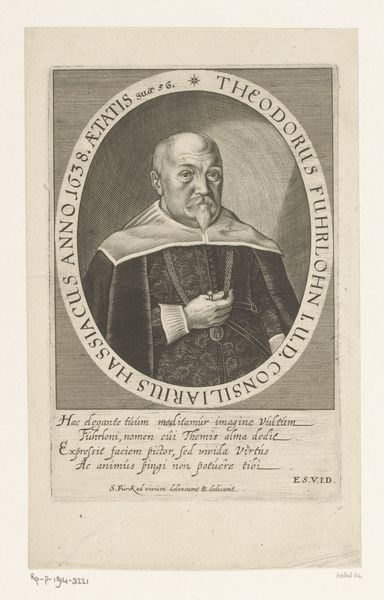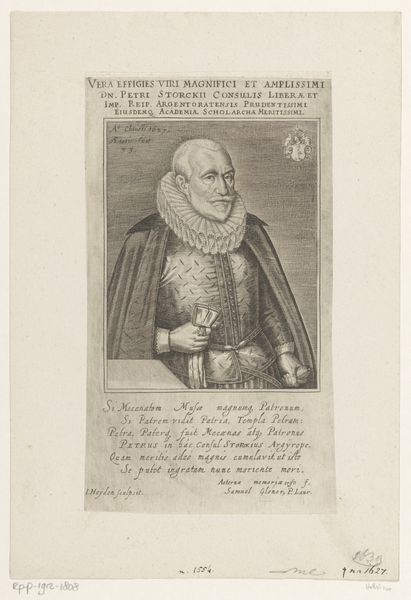
print, engraving
#
portrait
# print
#
old engraving style
#
history-painting
#
engraving
Dimensions: height 251 mm, width 174 mm
Copyright: Rijks Museum: Open Domain
Editor: Here we have "Portret van Johann Herelius," an engraving by Heinrich Ulrich, sometime between 1582 and 1671. There's such striking formality about the subject and composition. What visual cues stand out to you the most? Curator: The most prominent symbols here for me are the hourglass and the man's gesture. The hourglass, of course, has always signified the passage of time, the ephemeral nature of existence, a memento mori. Its inclusion reminds us of mortality and, perhaps, the fleeting nature of earthly achievements. Now, look at Herelius' hand: He gestures outwards. What could that mean to you? Editor: It almost seems like he is making a point, as if emphasizing some matter he had just considered. Curator: Precisely. He directs our attention, even pleads a case. Consider it with the scrolls at the table. What do those connote? The weight and longevity of the law? The constant return to prior interpretations, precedent? It suggests legal authority but also, doesn't it feel fragile? Paper decays, ink fades. The power of the word must be constantly reaffirmed, generation after generation. The impermanence of time. Does it challenge our modern faith in documents and records? Editor: That's a fascinating point. I hadn’t considered that. Curator: The portrait plays with layers of meaning, a conversation about power, time, and the enduring but fragile nature of knowledge. Think about the fact that engravings made these people reproducible! Editor: It seems to show so much depth of insight from such careful selection of imagery. Thanks, I will look for symbolic communication more deeply from now on!
Comments
No comments
Be the first to comment and join the conversation on the ultimate creative platform.
